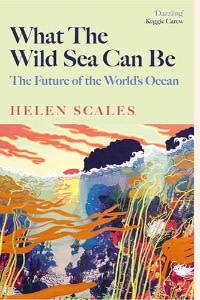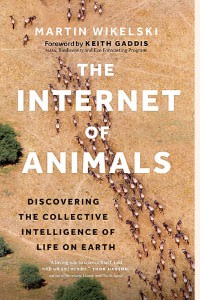From the power of renewable resources to the intelligence of animals – notable new books on the environment
Unlock the Editor’s Digest for free
Roula Khalaf, Editor of the FT, selects her favorite stories in this weekly newspaper.
Anyone who writes regularly about the environment is sometimes asked to name one book they will read on climate change. Alas, it is becoming increasingly difficult to find a single topic that covers all aspects of climate science, climate communication, green finance, net zero technology or many other topics in this vast field. which is growing. But some good books on important climate issues have come out this year, including Rob Jackson’s Into Clear Blue Skies: How to Take Back Our Atmosphere (Allen Lane £25).

The author is an environmental science professor at Stanford who wants us to rethink our approach to greenhouse gas emissions. Having taken so long to act, we should – he argues convincingly – look beyond emissions reduction goals to set goals for what he calls “atmosphere restoration”. That means using nature and technology to remove greenhouse gases from the atmosphere, an idea that worries many environmentalists who fear it undermines the need to reduce emissions.
Jackson acknowledges the risk but points to a range of potential benefits as he analyzes the work of entrepreneurs and scientists on the margins of reduction and elimination. His work on methane, a more potent but shorter-lived greenhouse gas than carbon dioxide, is eye-opening. It’s impossible to think of gas stoves the same way again after learning how much methane they can emit indoors, even when turned off.
Methane also provides what Jackson calls the best and perhaps the only razor we have to shave temperatures and prevent extreme weather in the near future. In fact, he writes, “returning methane to pre-industrial levels will save 0.5C of warming and it could happen in your lifetime”. That is a message that needs to be heard a lot.

The same is true of what former BBC science and environment correspondent Richard Black writes about The Future of Energy (Melville House £8.99). Black’s slim, glossy book provides a fascinating introduction to the global effort to rid the world of fossil fuels and find clean, healthy sources of energy.
He thinks that change can be achieved primarily through just five technologies: renewables such as wind turbines and solar panels; batteries and other storage devices; electric vehicles; heat pumps; and raw hydrogen. All five, he says, can be produced in large quantities and are likely to follow Wright’s Law, which means that the more they are made, the cheaper they are. That doesn’t apply to large, energy-intensive generators like nuclear reactors or carbon-intensive power stations and storage.
One of Black’s most interesting chapters is about what he calls the “frustrating monkeys”: lobbyists, journalists and influential experts who block efforts to transition to clean energy. The power of the appeal is illustrated by a recent survey by the energy and climate think tank which asked UK MPs to name the cheapest form of new power generation. in their country. Only 8 percent gave the correct answer: coastal wind.

Marine biologist Helen Scales has more unpleasant news What the New Ocean May Hold: The Future of the World’s Oceans (Grove Press £18.99). He describes the pollution, overfishing, warming waters and diseases that plague everything from emperor penguins to gannets and orcas. But he also shows what can happen when authorities step in to prevent a massacre, as they did in the early 2000s on the Caribbean island of Little Cayman.
Tens of thousands of Nassau groupers used to congregate around Little Cayman to fish in water so thick that sometimes there was no water to see between the fish. They were badly caught, only to recover due to renewed attacks by fishermen, who in 2001 caught 2,000 of the 7,000 groups in just one week. Fishing in the winter months was prohibited by law and the population of the groups gradually increased. As Scales writes: “Marine wildlife has a tremendous capacity to regenerate and recover from terrible loss and decline. Often all that is needed is for the looting, destruction and pollution to stop.”

That inspiring thought is like a fascinating story Animal Networks: Discovering the Collective Intelligence of Life on Earth (Greystone Books £18.99). Author Martin Wikelski is the director of the Max Planck Institute of Animal Behavior and has spent years trying to understand how animals seem to know when to run away from an earthquake or avoid an oncoming storm.
While doing so he is charged by a quarter ton sea lion in the Galápagos and awakened by a bite on the back from a rat. He reports: “I was surprised but I did not hold it against the rat. “It was just being a rat.” But his work also helped launch Icarus, or International Cooperation for Animal Research Using Space, an initiative that allows scientists to spy on wild animals to study their behavior.
Wikelski hopes the program will create an “animal internet” that provides a daily “lifecast,” like a weather forecast, that shows what’s happening around the world. Spider activity in Russia may suggest an imminent volcanic eruption. Himalayan birds can show that it is dangerous to climb Everest today. And so on.
His vision is strong. But so is the need for people to do more to protect the climate and wilderness that they and all creatures depend on.
Poor Clark is the FT’s business reporter
Join our online book group on Facebook at FT Books Café and subscribe to our podcast Life and Art wherever you listen
#power #renewable #resources #intelligence #animals #notable #books #environment